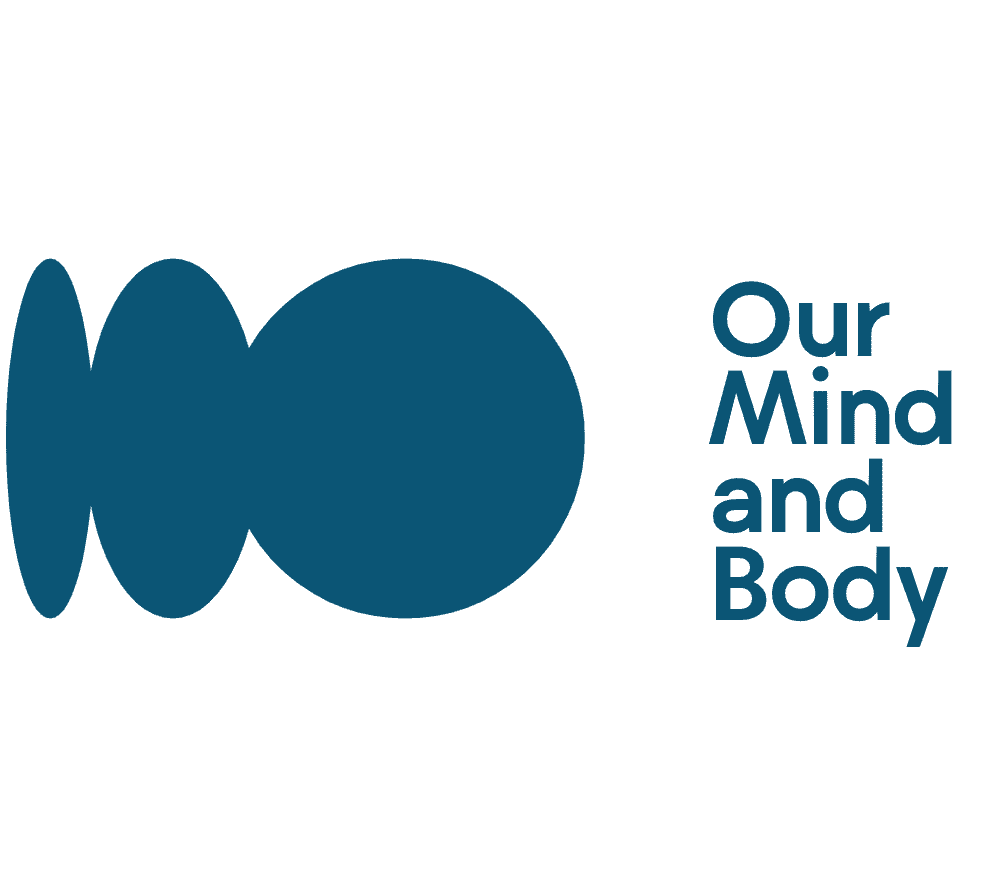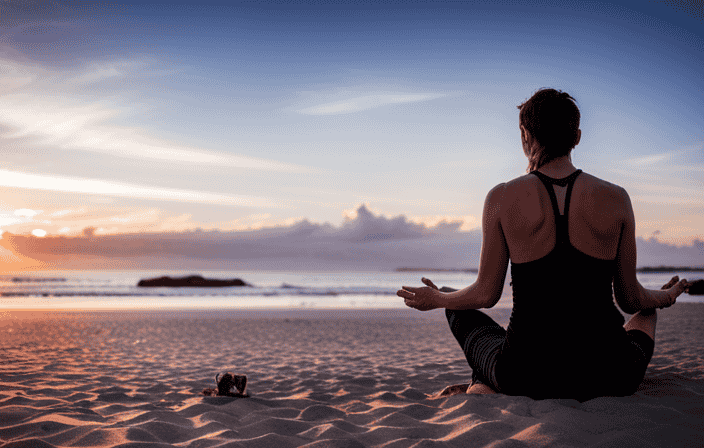What Is Yoga
When I step onto my yoga mat, it’s like entering a sanctuary where my mind, body, and soul unite in perfect harmony.
Yoga, the ancient practice that has transformed my life, offers so much more than just physical postures. It is a journey of self-discovery, a path to inner peace and well-being.
In this article, I will share with you the essence of yoga, its various styles, the incredible benefits it offers, and how you can incorporate this beautiful practice into your everyday life.
Key Takeaways
- Yoga originated in ancient India during the Indus Valley Civilization around 3000 BCE.
- Yoga has evolved from a spiritual practice for enlightenment to a holistic practice incorporating physical postures, breath control, meditation, and ethical principles.
- Different styles of yoga, such as Vinyasa, Hatha, Ashtanga, Bikram, and Restorative, offer unique benefits for physical and mental well-being.
- Breath and breath control techniques in yoga, such as deep belly breathing, alternate nostril breathing, Kapalabhati breath, and Ujjayi breath, enhance the overall yoga experience.
The Origins of Yoga
You might be wondering where yoga actually comes from. Well, let me take you on a journey back in time to discover the origins of this ancient practice.
Yoga has a rich and diverse history that spans thousands of years, originating in ancient India. Its roots can be traced back to the Indus Valley Civilization, which existed around 3000 BCE. The word ‘yoga’ itself comes from the Sanskrit word ‘yuj,’ which means to unite or join.
Yoga’s cultural significance cannot be overstated. It is deeply ingrained in Indian culture and has been practiced for centuries as a means of spiritual and physical development. In fact, yoga was initially developed as a spiritual practice to help individuals attain enlightenment and connect with their higher selves. Over time, it evolved into a holistic practice that encompasses physical postures, breath control, meditation, and ethical principles.
The ancient texts of yoga, such as the Yoga Sutras of Patanjali, provide profound insights into the philosophy and practice of yoga. These texts serve as a guide for practitioners, offering wisdom and teachings that are still relevant today. Yoga has transcended cultural boundaries and has become a global phenomenon, with millions of people around the world embracing its transformative benefits.
Now that we have explored the origins and cultural significance of yoga, let’s delve into the different styles of yoga and explore how they cater to the diverse needs and preferences of practitioners.
Different Styles of Yoga
When it comes to the world of yoga, there is a wide array of popular styles to choose from, each with its own unique benefits.
As an experienced practitioner, I am passionate about exploring and understanding the different styles and their advantages.
In this discussion, we will delve into the popular yoga styles, the specific benefits they offer, and how to choose the right style that aligns with your goals and preferences.
Popular Yoga Styles
One of the most popular yoga styles is Vinyasa, which is known for its flowing and dynamic sequences. As a yoga practitioner, I have discovered that Vinyasa offers a multitude of benefits, both physically and mentally. Here are four reasons why Vinyasa has become one of the most sought-after yoga trends among famous yoga practitioners:
-
Breath and Movement Synchronization: Vinyasa emphasizes the coordination of breath with movement, creating a rhythmic and meditative experience.
-
Strength and Flexibility: The continuous flow of Vinyasa poses builds strength, while the fluid transitions improve flexibility.
-
Cardiovascular Workout: The dynamic nature of Vinyasa elevates the heart rate, providing a cardiovascular workout.
-
Mindfulness and Focus: Vinyasa encourages present-moment awareness and enhances mental clarity.
With its numerous benefits, Vinyasa has captured the hearts of yogis worldwide.
Now let’s explore the specific benefits of each popular yoga style.
Benefits of Each
Now let’s delve into the specific advantages that each popular yoga style brings to the table.
Yoga is a diverse practice with numerous styles, each offering unique benefits and advantages. Hatha yoga, for example, focuses on improving flexibility, strength, and balance through gentle, slow-paced movements and deep breathing.
Vinyasa yoga, on the other hand, emphasizes fluid movements and breath synchronization, enhancing cardiovascular health and promoting mindfulness.
Ashtanga yoga, with its dynamic and challenging sequences, builds stamina, increases flexibility, and tones the body.
Bikram yoga, practiced in a heated room, aids in detoxification, improves circulation, and promotes weight loss.
Restorative yoga, with its relaxing and gentle poses, reduces stress, promotes relaxation, and helps with anxiety and sleep issues.
These different styles cater to various needs and preferences, allowing individuals to find the perfect fit for their wellness journey.
Transitioning to the next section, let’s now explore the importance of choosing the right style for you.
Choosing the Right Style
To find the perfect fit for your wellness journey, consider your individual needs and preferences when choosing the right yoga style. It’s important to find a yoga teacher who resonates with you and understands your goals.
Avoid these common mistakes in choosing a yoga style:
-
Neglecting your physical abilities: Take into account your current fitness level and any injuries or limitations you may have. Opt for a style that allows modifications and offers variations for different levels.
-
Ignoring your mental and emotional needs: Yoga is not just about the physical practice. If you’re seeking stress relief or want to cultivate mindfulness, choose a style that incorporates meditation and breathwork.
-
Focusing solely on the physical aspect: While physical fitness is important, don’t overlook the spiritual and philosophical aspects of yoga. Explore styles that align with your beliefs and values.
-
Not experimenting and trying different styles: Don’t be afraid to explore different styles and classes. Each teacher brings their unique approach, and you might discover a style that resonates with you more deeply.
Finding the right yoga style is a personal journey. Trust your instincts, listen to your body, and enjoy the process of discovering what works best for you.
Benefits of Practicing Yoga
Practicing yoga regularly can offer a wide range of benefits to both the mind and body. As someone who has been practicing yoga for years, I can confidently say that it has transformed my life in more ways than I can count.
One of the most noticeable benefits is the improvement in flexibility. Through various poses and stretches, yoga helps to lengthen and strengthen the muscles, allowing for greater range of motion. This increased flexibility not only enhances athletic performance but also reduces the risk of injury in daily activities.
But the benefits of yoga go far beyond physicality. Yoga has a profound effect on reducing stress. In our fast-paced and hectic lives, stress can take a toll on our mental and emotional well-being. Yoga provides a sanctuary where we can escape from the chaos and find inner peace. The combination of deep breathing, meditation, and mindfulness helps to calm the mind, release tension, and promote relaxation. It is a powerful tool for managing stress and finding balance in our lives.
Yoga Poses and Asanas
If you’re looking to improve your flexibility, there are various poses and asanas that can help you achieve that. As a yoga practitioner with years of experience, I can confidently say that yoga is not only a great way to increase flexibility but also a powerful tool for stress relief.
Here are four yoga poses and asanas that have worked wonders for me:
-
Downward Facing Dog (Adho Mukha Svanasana): This classic pose stretches the entire body, targeting the hamstrings, calves, and shoulders. It also helps relieve tension in the back and neck, promoting a sense of calm and relaxation.
-
Triangle Pose (Trikonasana): This pose stretches the hips, hamstrings, and chest, while also improving balance and focus. It helps release stress and tension in the body, leaving you feeling rejuvenated and refreshed.
-
Bridge Pose (Setu Bandhasana): This pose opens up the chest and shoulders, while also strengthening the back and legs. It stimulates the nervous system and helps alleviate anxiety and fatigue.
-
Child’s Pose (Balasana): This gentle pose stretches the hips, thighs, and ankles, providing a sense of deep relaxation and release. It calms the mind and relieves stress, making it a perfect pose for winding down after a long day.
Incorporating these yoga poses and asanas into your practice can not only improve your flexibility but also provide much-needed stress relief. So roll out your mat, breathe deeply, and let yoga work its magic on your body and mind.
The Importance of Breath in Yoga
As someone who’s been practicing yoga for years, I can confidently say that breath control techniques are crucial in this ancient practice.
Deep breathing not only helps to calm the mind and bring a sense of focus, but it also allows for a deeper connection between the body and the mind.
The benefits of deep breathing in yoga are numerous. They include improved lung capacity, reduced stress levels, and increased energy flow throughout the body.
Breath Control Techniques
You can enhance your yoga practice by incorporating breath control techniques. These techniques, also known as Pranayama exercises, are an integral part of yoga and can greatly deepen your experience on the mat.
Here are four breath control techniques that I have personally found to be transformative:
-
Deep Belly Breathing: By focusing on deep, diaphragmatic breaths, you can activate your body’s relaxation response and calm the mind.
-
Alternate Nostril Breathing: This technique involves breathing through one nostril at a time, which helps balance the energy in the body and promotes mental clarity.
-
Kapalabhati Breath: This rapid, forceful exhale followed by a passive inhale helps to invigorate and energize the body.
-
Ujjayi Breath: Often referred to as ‘ocean-sounding breath,’ this technique involves constricting the back of the throat to create a soft, soothing sound. It helps to focus the mind and regulate the breath.
Incorporating these breath control techniques into your yoga practice can take your journey to a whole new level, allowing for a deeper connection between the mind, body, and spirit.
Benefits of Deep Breathing
Deep belly breathing, also known as diaphragmatic breathing, helps to activate the body’s relaxation response, reducing stress and anxiety. Alternate nostril breathing helps to balance the energy in the body, promoting mental clarity and focus. Kapalabhati breath, or skull shining breath, detoxifies the body and invigorates the mind. Lastly, Ujjayi breath, commonly referred to as victorious breath, calms the nervous system and encourages a deep sense of relaxation.
Yoga Philosophy and Principles
Explore the principles of yoga philosophy to deepen your understanding and practice. As a practitioner of yoga for many years, I’ve come to appreciate the profound wisdom and guidance that yoga philosophy offers.
It not only enhances the physical aspect of yoga but also provides a framework for personal growth and self-discovery.
Here are four key principles of yoga philosophy that have greatly influenced my practice:
-
Ahimsa (non-violence): This principle teaches us to cultivate compassion and kindness towards ourselves and others. It reminds us to practice yoga in a way that honors our bodies’ limitations and avoids causing harm.
-
Satya (truthfulness): Satya encourages us to be truthful in our thoughts, words, and actions. It prompts us to be authentic and honest with ourselves and others, fostering a deeper connection and understanding.
-
Santosha (contentment): Santosha reminds us to find contentment and gratitude in the present moment, embracing life as it is. It encourages us to let go of attachment and cultivate a sense of inner peace and fulfillment.
-
Ishvara Pranidhana (surrender to a higher power): This principle invites us to surrender our ego and trust in a higher power or divine intelligence. It reminds us that we are part of something greater than ourselves and encourages us to let go of control and surrender to the flow of life.
Incorporating these principles into your yoga practice can transform it into a deeply enriching and transformative experience. Embrace the wisdom of yoga philosophy and allow it to guide you on your journey of self-discovery and personal growth.
Yoga for Mental and Emotional Well-being
Incorporating mindfulness practices into your daily routine can greatly improve your mental and emotional well-being. Yoga, in particular, is an effective tool for stress reduction and self-care. As someone who has experienced the transformative power of yoga, I can confidently say that it has had a profound impact on my overall well-being.
Yoga combines physical postures, breathing exercises, and meditation to create a holistic practice that helps calm the mind and relax the body. It helps to release tension and reduce anxiety, allowing you to better manage the stresses of everyday life. By focusing on the present moment and cultivating a sense of mindfulness, yoga helps to quiet the mind and bring about a sense of inner peace.
To further illustrate the benefits of yoga for mental and emotional well-being, let’s take a look at the following table:
| Yoga and Stress Reduction | Yoga and Self-Care | Yoga and Mental Health |
|---|---|---|
| Reduces cortisol levels | Enhances self-love | Alleviates symptoms of depression |
| Promotes relaxation | Cultivates compassion | Reduces anxiety levels |
| Improves sleep quality | Boosts self-esteem | Enhances overall well-being |
As you can see, yoga offers a wide range of benefits for mental and emotional well-being. It is a powerful practice that can help you find balance, reduce stress, and take care of yourself on a deeper level. So, why not incorporate yoga into your daily routine and experience the positive impact it can have on your life?
Incorporating Yoga Into Your Daily Life
If you want to make yoga a part of your daily life, start by setting aside a specific time each day for your practice.
Here are some tips to help you incorporate yoga into your daily routine:
-
Find a time that works for you: Whether it’s first thing in the morning or before bed, choose a time that you can commit to every day. Consistency is key when it comes to establishing a yoga practice.
-
Create a dedicated space: Designate a specific area in your home where you can roll out your mat and practice yoga. This will help create a sense of sacredness and make it easier for you to focus on your practice.
-
Start with a short practice: If you’re new to yoga or have a busy schedule, start with a shorter practice, such as 10-15 minutes. As you become more comfortable, you can gradually increase the duration of your practice.
-
Explore different styles and classes: To keep your practice engaging and enjoyable, try different styles of yoga and attend different classes. This will help you discover what resonates with you and keep you motivated to continue your practice.
Incorporating yoga into your daily life can bring numerous benefits, including stress relief, increased flexibility, and strength. By setting aside time for your practice and following these tips, you can make yoga a regular and rewarding part of your day.
Frequently Asked Questions
Can Yoga Help With Weight Loss or Body Toning?
Yes, yoga can definitely help with weight loss and body toning. I’ve personally experienced the benefits of practicing yoga for these purposes.
Yoga not only helps in burning calories and shedding excess weight, but it also tones and strengthens the muscles. Additionally, yoga promotes mindfulness and stress relief, which can contribute to a healthier lifestyle and overall well-being.
Moreover, regular yoga practice improves flexibility, which is essential for achieving a toned and agile body.
Is Yoga Only for Flexible People?
As someone who’s been practicing yoga for years, I can confidently say that yoga is not just for flexible people. It’s a misconception that only flexible individuals can benefit from yoga.
In fact, yoga is for everyone, including beginners. Yoga offers numerous benefits for mental health, such as reducing stress, increasing mindfulness, and promoting overall well-being.
Can Yoga Be Practiced During Pregnancy?
Yoga during pregnancy is a wonderful way to stay active and maintain a healthy mind-body connection. I have personally practiced prenatal yoga and can attest to its numerous benefits.
It helps to alleviate common pregnancy discomforts, improves flexibility, and promotes relaxation. Prenatal yoga also strengthens the muscles needed for labor and delivery.
It is important, however, to consult with a qualified instructor and modify poses as needed to ensure safety for both mom and baby.
How Often Should I Practice Yoga to See Results?
To see results from yoga, consistency is key. As an experienced yogi, I know that practicing regularly is essential. By committing to a consistent yoga practice, you can reap the benefits it offers.
The frequency of your practice depends on your goals and schedule, but ideally, aim for at least three times a week. Regular yoga practice not only improves flexibility and strength but also enhances mental clarity and reduces stress.
Is It Necessary to Have a Yoga Instructor or Can I Practice on My Own?
Having a yoga instructor can be beneficial, but it’s not necessary to practice yoga.
I have found that practicing on my own has its own challenges. While a yoga instructor can provide guidance and corrections, self-practice allows me to explore and listen to my own body.
It’s important to educate yourself on proper alignment and techniques to avoid injury.
Ultimately, what matters is finding a practice that works for you and brings you joy.
Conclusion
In conclusion, yoga is not just a physical exercise, but a way of life that can bring immense benefits to our overall well-being.
Through its ancient origins, various styles, and powerful poses, yoga offers a path to physical strength, mental clarity, and emotional balance.
By incorporating yoga into our daily lives, we can learn to cultivate mindfulness, find inner peace, and navigate the challenges of life with grace and resilience.
So, dive into the world of yoga and experience the transformative power it holds. Embrace this practice with an open heart and mind, and let it guide you towards a healthier and more fulfilling life.
Namaste.













